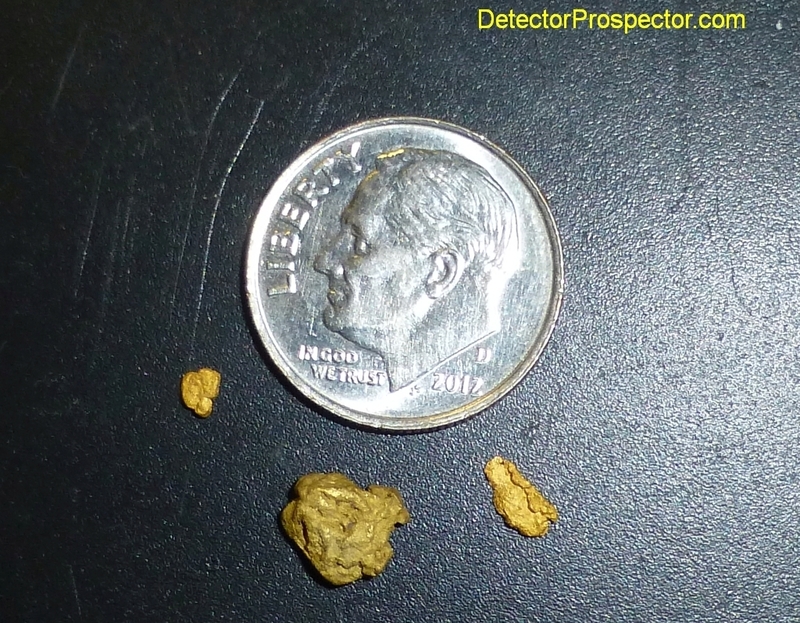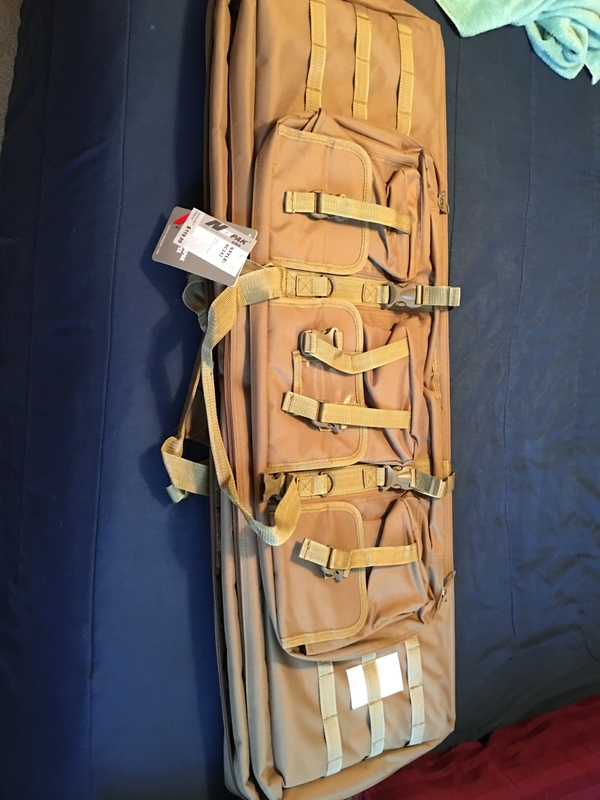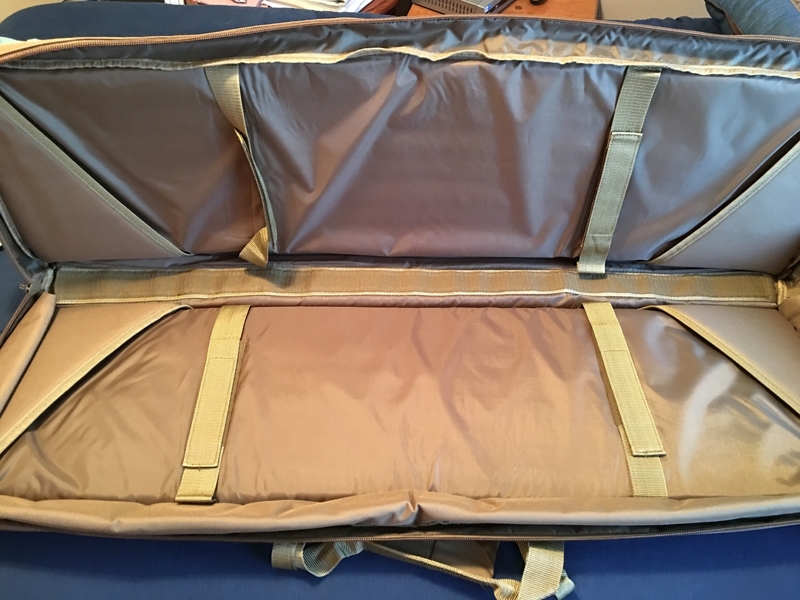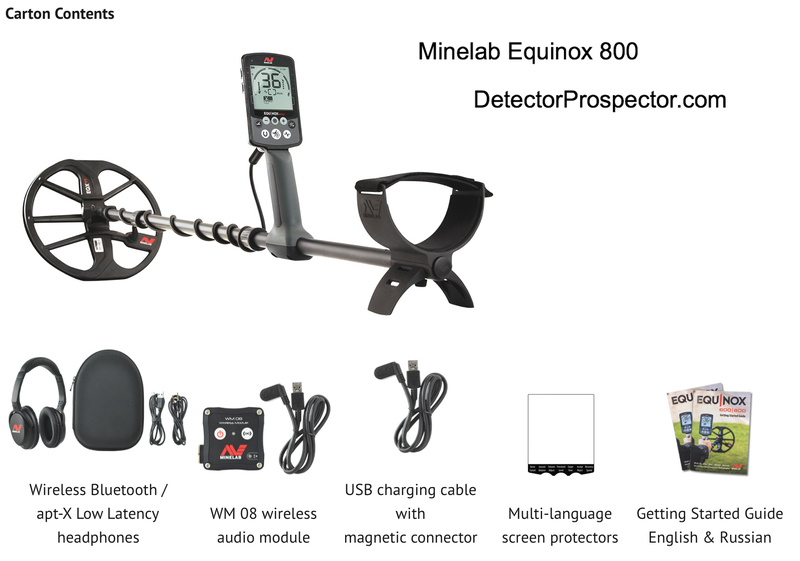Search the Community
Showing results for tags 'minelab equinox'.
-
I was fortunate enough to be invited to the annual Minelab Partner Conference in Phoenix that was just held during January 14th to 16th. And I was lucky enough to swing the Equinox 800 under the tutelage of its godfather, Minelab Engineer and Product Technical Manager Mark Lawrie at the GPAA Golden Dreams mining claim near Morristown, Arizona. Being composed of tertiary volcanic rocks and soils, this area is extremely noisy, making it very difficult for most VLF gold machines to cope with. Using a small 2-grain test nugget buried at 2 inches, Mark and I adjusted settings on the EQX to get the most distinct target signal from the test nugget relative to the ground response. Although the Nox performed admirably in these exteme ground conditions, finding many small bits of lead and brass bullet shrapnel that litters the area, suffice it to say that I won’t be trading off my Gold Monster 1000 anytime soon. Granted I only was able to swing the EQX for half a day and would need a lot more time to get familiar with its capabilities, and I’m sure it would fare much better in search of small gold nuggets in non-volcanic soil types. As far as I could tell, the Equinox 800 was running the latest software version, as the Gold Mode had the multi frequency option available.
-
Mr. Herschbach! How does the operating sensitivity of the air compare with the depth of detection plus the air gap? (in percent; with the same purpose and the same settings)
-
Took a closer look at the NEW quick start guide and noticed a menu setting/adjustment I hadn't seen before called "Iron Bias". 600 allows three step adjustments (0-3) while the 800 appears to allow 9 steps (0-9). The icon/brief description is across from the adjustable recovery speed setting on the guide on the bottom row. Can Steve or anyone else explain this setting? Thanks.
-
OK, I am warning you all up front - I still am going to be wishy-washy or outright avoidant of certain details still. The dam is cracking but not burst yet. Here are the results of a test run with the new multifrequency (MF) option in Gold Mode. I am battling limited time and weather issues so was actually quite pleased to find any gold at all - a few lead bits often tells me just as much, so the gold is a sort of bonus. Anyway, Equinox 800, Gold Mode, MF, relatively mild ground and so I was pushing sensitivity levels high, 22 - 25. Three nuggets, two of only 0.6 grain each (480 grains per ounce) and one 9.8 grains (0.6 gram). The 0.6 grain nuggets are one smaller, fatter one plus one thin flake. What most impresses me about these are not the gold per se. It is the fact these were found with an 11" round DD coil. I am not in a position to be able to excavate these like an archeologist to determine the exact depth they were found at but I can guesstimate based on the holes and sounds. The two tiny bits were found at 1-2 inches, and the 9.8 grain nugget at 3-4 inches. Just based on this alone and many years of nugget detecting I can tell you the Equinox can hunt gold just fine. How will it stack up against dedicated gold nugget detectors? Frankly, in my opinion that will be determined largely by coils. Operationally I much prefer the 6" x 10" DD on my Gold Monster and hope such a coil becomes available for Equinox. The 11" open web will be "OK" but not a great prospecting coil design which is why no dedicated VLF gold detectors come with one. It hangs up on protruding rocks and stubble and so a solid design would be better, or at least a solid scuff cover. The large coil will false on rocks if struck will at the highest sensitivity levels and low recovery speeds while in Gold Mode and the extra edges just accentuate that tendency. The 6" coil will be nice but more for spot work as covering acres at a time with a 6" round coil....... I want the elliptical. Long story short my Gold Monster is not going anywhere quite yet, but only because of the coil. The big coil can find small gold however, and should give great performance on larger nuggets at depth, more than an elliptical will get. For a VLF however - always keep that in mind. This is not a Minelab PI or GPZ 7000.
-
https://www.minelab.com/usa/go-minelabbing/treasure-talk/equinox-technologies-part-3 Cliff EQUINOX Technologies (Part 3) January 15, 2018 Minelab Electronics This is the third instalment in a blog series introducing and explaining the technologies inside our new EQUINOX detectors… (Read Part 1 here. Read Part 2 here.) Our goal was to develop a true multi-purpose detector that could not only physically be used in all-terrain conditions, but also be suitable for all types of detecting for all detectorists, and particularly those not requiring a specialist premium flagship detector optimised for only one aspect of detecting – e.g. coins, beach, gold, jewellery, water, discrimination, artefacts, etc. This multi-purpose requirement is something that could only be achieved by going beyond single frequency and creating the next generation of multi-frequency technology. Equally adaptable to all target types and ground conditions – just select your detecting location and go! An important update on the Detect Modes… Previously we have stated that Park, Field and Beach would run in multi-frequency and that Gold would only use the single frequencies of 20kHz and 40kHz, giving better results for gold nugget hunting. Our ongoing collaborative field testing feedback from around the world has resulted in further improvements to Multi-IQ to the point where multi-frequency is now the best option for Gold Mode as well, and will be the default setting. Please refer to the revised Getting Started Guide for updated product functions. Now, back to the technology: looking into our Multi-IQ diagram further… a single frequency is most sensitive to a narrow range of targets and multiple frequency is equally sensitive to a wider range of targets (e.g. the orange curve versus the white curve below). According to Philip Wahrlich, “From our testing, the Multi-IQ deployed in EQUINOX detectors has shown no significant trade-offs relative to the best single-frequency detectors and exceeded performance benchmarks in many important attributes, especially discrimination. And, for good measure, EQUINOX can also be operated as a single-frequency detector” While we could delve into this aspect further, many of our readers are likely more interested in what happens within the white Multi-IQ band itself, rather than single versus multi. What has Minelab developed new, and uniquely, with frequencies to give better performance across the whole range of targets for different conditions? The Multi-IQ transmit signal used in EQUINOX is a complex waveform where multiple frequencies are combined in a very dissimilar way than our proven BBS/FBS technology in Excalibur II / Safari / E-TRAC / CTX 3030 detectors. If you view the BBS signal amplitude on an oscilloscope, it looks something like this: In comparison, Multi-IQ looks something like this: Hence – Multi-IQ is not a derivative or evolution of BBS/FBS. Multi-IQ is a DIFFERENT method of simultaneous multi-frequency metal detection. We could also debate “simultaneous” versus “sequential” semantics; however the real detection ‘magic’ doesn’t happen with what is transmitted to and received from the coil alone. Remember, in Part 2, we discussed how frequencies are “combined AND processed” as being important for achieving better results? Let’s assess Multi-IQ for the different Detect Mode search profiles: Park 1 and Field 1 process a lower weighted frequency combination, as well as using algorithms that maximise ground balancing for soil, to achieve the best signal to noise ratio. Hence being most suited for general detecting, coin hunting, etc. Park 2 and Field 2 process a higher weighted combination of the Multi-IQ band while still ground balancing for soil. Therefore they will be more sensitive to higher frequency (low conductive) targets, but potentially more susceptible to ground noise. Beach 1 also processes a lower weighted combination, BUT uses different algorithms to maximise ground balancing for salt. Hence being most suited for both dry and wet sand conditions. Beach 2 processes a very low weighted frequency combination, using the same algorithms as Beach 1 to maximise ground balancing for salt. This search profile is designed for use in the surf and underwater. Gold 1 and Gold 2 process the higher weighted combination of the Multi-IQ band while still ground balancing for soil. However, they use different setting parameters better suited for gold nugget hunting. Will Multi-IQ technology really obsolete all single frequency detectors? We’ll continue the discussion in Part 4…
-
Why do you want the Equinox? Maybe I should say why I want the Equinox? For me it is the accumulation of years of detecting and knowing, that in most cases new technology brings new benefits to the hobby. For the past 20 years I’ve seen a huge leap in technology. Both the computer industry (actually had a computer business for 10 years) and of course metal detectors have excelled at a phenomenal rate. Faster CPU’s allow more data to be processed and analyzed, for both. Like most treasure hunters I’m looking for the so called edge that allows me to excel in the hobby. The presumed hunted out sites come alive with additional treasures. This adds more excitement and rewards as time is spent learning a new machine. Then, all of a sudden you believe in the detector you’re using and the finds seem to come with little if any effort on your part. Amazing, yes, humans have the ability to excel if they believe in something and detecting is no exception. Now I’d like to bring in a particular machine. The V3i when running three frequencies opened up many a site where I live. My buddy, who first purchased the V3i whipped me at every site when it came to finding silver, so his nickname became Fred Silverman, hence the phrase. We spent many hours comparing targets and the majority of the time my machine didn’t give as good an audio or ID than his. I had the best detector that could be bought “not mentioning the brand”, but that didn’t make a difference. Then I bought a V3i and sure enough it made a difference for me as well. Loved the machine, but for me it was too heavy to hunt long at a time and having neck problems prevented me from keeping the machine very long so I had to sell. Bought a Deus, super light weight, but even it couldn’t compete with my friends V3i, multi-frequency. We did side by side comparisons, over several months, but even the Deus in my area couldn’t compete, so I sold. Coming full circle, the Equinox has what I’m looking for: Multi-Frequency like the V3i Light weight like the Deus Extremely fast like the Deus Adjustability like the V3i and Deus Multi-tone like the Deus and V3i Better price point, cheaper than both Then I must add all the other features wireless and waterproof. Just how I feel
-
On a Dutch forum a well known dealer expected the first small bunch Equinoxen at the end of this month.
-
I use a Garrett AT Pro for dry sand detecting, and when hit by EMF, usually from bar internet systems, the operating frequency of the AT Pro can be adjusted to try and eliminate it. There are four slightly different frequencies to choose from. Just wondering if Steve knows whether there are adjustments that can be made with the Equinox, apart from turning down the sensitivity of course, to alleviate interference from EMF. HH
-
The provocative thread title is not meant as a headline scoop for a newly revealed design flaw in the Equinox but as a discussion point as explained below. Perspective: I see the Equinox as a machine that that encompasses advanced detecting technology that enables it to be a jack of many trades, but not necessarily a master of all or even possibly any. I have a Deus and a GPX and a number of other VLF detectors that sit around collecting dust because I am generally swinging my Deus when I can and my GPX when I have to (deep relic hunting in highly mineralized soil). The Equinox is attractive to me because I see that it will excel VS. THE DEUS at wet salt beach hunting (an admittedly extremely low bar) which is something I would like to explore further as the Deus limits my ability to do that effectively. Yet, I do not see myself even becoming primarily a salt beach hunter. I also see the MultiIQ technology coupled with fast recovery speed of the Equinox and dedicated single high frequency (aka Gold Mode) options as a detector that can seriously challenge the Deus in mineralized soil conditions and thick iron as well as for mid-conductive relic hunting (namely brass hardware and buttons) vice gold. It, at the very least, may open up some opportunities at sites where I would have to scan the site more than once with the Deus at different frequencies using the newer Deus HF coils. It will also enable me to do some back woods water hunting without having to engage all the ridiculous antenna and phone bag claptrap that is required to make the Deus ready to be dunked in the drink. I never envisioned the Equinox as a detector that would obsolete existing Minelab BBS and FBS machines at salt beach hunting. Obviously the Excal II is also a Dive machine so the Equinox cannot replace that capability and the Sovs are revered for their abilities on and off the beach as is the CTX, even if it is a bear to lug around. The PI beach machines are are a different animal altogether. Basis for Discussion: I see a lot of dedicated salt beach detectorists here and I can't help but wonder if there will be disappointment amongst the dedicated salt beach crowd with respect to Equinox performance vs. the existing Minelab salt beach "royalty" detectors. I know that some here consider me "confused" when it comes to discussing this topic, but the only reason I bring it up is to learn from the anticipated back and forth discussion in the thread I am coming at this not as an expert in salt beach hunting, because I am obviously not that, but as a detector geek. I can't help but wonder why dedicated salt beach detectorists think the Equinox will hold a candle to their existing beach machines at the price point and with the other non-salt-beach related capabilities offered. Logically, there just has to be compromises made by Minelab with respect to salt beach capability vs. the Sovs, Excals, and CTX's (i.e., the "no free lunch" axiom). Don't get me wrong, the Equinox should be capable and up to the task of Salt Beach hunting, but will it excel vs. these other detectors or is it just wishful thinking and a pipe dream? Is there healthy skepticism or unrealistic expectations? So please give me your thoughts. Thanks.
-
This one I got at a gun show this past weekend for 65 dollars.Got big pockets and a small compartment under the pockets to put other items if need. Was made for two gun but took the center out being not enough room for two detectors. I buy this type of case for all my detectors. Chuck
-
After such a frustrating lead up to the Equinox I think Minelab would want to make sure everything is perfect and no recalls because it would make a lot of people jump ship from Minelab . I have 5 minelab machines and no other brand but if one screw up it will make me unstable on loyalty and I would test other brands . I have too much faith in Minelab and I guess I I am hoping my heart doesn't get broken .
-
Since this is an Equinox forum, people may assume it is supposed to be all sunshine and roses. The truth is I love well written critical commentary. The problem with most negative posts about detectors is they come down to "I saw a video somebody posted and that machine sucks". Personally, I see minimal value in that sort of thing. What I want to see here is posts and reviews from people who A. have actually run the detector and B. can offer straight up critique without the extraneous "boy, how dumb can they be" commentary. What do you like, what did you not like. What worked well, what does not work well, and why. Things to do, things to avoid. Whatever. It's not that you have to heap praise - if you don't like something for some reason then simply explain why. Here is the first review I did on a Nokta product. Notice I mentioned several things about the machine I was not wild about. I did not beat the company up for it - just stated the facts as seen from my perspective. Notice I went back later and also commended the company for later addressing those very issues. Where is my similar review as regards Equinox? Can't do it until I have an actual production unit in my hands or assurance that what I have would match a production unit in every way. When the time comes I will do my thing, though it will not need quite the detail of the Nokta review just because so much of that stuff has been covered already here on the forum. Just wanted to get that out there. It is probably premature so I will bump this up again when units start shipping. All we want to know, all of us, is what people around the world think about various aspects. Some things will be great, some ok, and a few not ok. That's real, and real is all I ask for. Thanks!
-
I do a lot of relic hunting in Virginia especially in the mineralized fields near Culpeper. I am sure many of you are familiar with the organized hunts conducted in and around that area. Obviously, I have seen a number of vlf detectors struggle under these conditions (AT Pro, F75, MXT, Deus, and even the CTX). Just as with most of those who frequently hunt there, the PI detector is the detector of choice vs. a vlf. I personally use a GPX 4800 and have also used the Garrett ATX with good success. When hunting I carry along my Deus strapped to my daypack, because I can but also because it acts as a pretty good pinpointer on steroids if I get into a pit and can use it to quickly scan the tailings. Being single frequency, it is obviously limited there but under certain circumstances it is usable. But my question isn't about the Deus. It is about the CTX vs. Equinox. I have seen the CTX struggle there just as bad as the Deus or any of the other VLF machines. Sure, we will all get lucky and find a relatively shallow keeper target with our VLFs but not consistently. Target ID is non-existent. I consistently hear about how the Equinox should excel in mineralized ground. I am also hearing about CTX owners who are excited to get their hands on an Equinox because it should do better under similar mineralized ground conditions. Since the CTX is a multifrequency FBS machine that I have seen no fare well in the what can be considered very hot soil, what is it about the Equinox and MultIQ (or othewise) that is raising expectations that it can perform better than the CTX under these conditions. I am not expecting PI like performance under these conditions, but I just want to better understand the differences in the CTX and Equinox designs that will enable the expected improved performance. Thanks.
-
I'm wondering if the Equinox battery charging terminals will be 'hot', ie. the detector's internal battery's voltage present at the terminals while detecting. Realizing the voltage is only around 5vDC, there isn't any real human danger with exposure. This is more a question of what happens if the terminals are 'hot' while detecting in saltwater. Could mineralized water provide a path for slow battery discharge, increasing battery drain? Is there any possibility of electrolysis that might cause damage to the charging terminals while detecting in saltwater?
-
As the arrival of the Equinox nears I know what forum I will coming to as we start using the Equinox in our main detecting locations. I'm curious what types of detecting environments people on this forum detect in. For myself I do a lot of woods hunting, celllar hole hunting with emphasis on colonial relics. I hunt fields whenever possible, and like to detect old parks and private permissions. Many of my best sites are iron/ laden and I'm hoping the EQX 800 will help unlock the finds I'm sure are still there.
-
The Equinox fitted with the 15 x 12 inch elliptical Double-D coil will provide maximum depth using the 5kHz Frequency. This frequency is ideal for hoard hunting in the UK and for relic hunting in USA.
-
Well, linking directly to Facebook stuff can be challenging, so let's see if this works for people.... https://www.facebook.com/groups/157635448164052/permalink/173177819943148/
-
I am glad that Minelab included a lower price point Equinox that helps deliver MOST of the goods for those detectorists on a limited budget. But for those just shopping for a bargain, I cannot help but think that it may leave many a detectorist wanting for more once they realize that you may be leaving behind more than just a Gold Prospecting mode if you choose to invest in the economy machine and there is really no upgrade path even with the capability of software updates, other than ultimately purchasing the 800. Be careful about just focusing in on the high frequency capability difference, and dismissing the difference as an unneeded capability just because you may not be a gold nugget prospector. There is more to the differences between the two than meets the eye. Part of the confusion lies in the fact that there is not hard and fast comparison between the two that I can find online, at least in relation to the capability (not just feature) differences between the two detectors. Also, even if you are not a gold prospector, high frequency capability is not something that should be of interest to the gold prospector, it enables capabilities that are also of interest to the relic hunter and even the coin shooter (more on that below).The following comparative information is what I can ascertain from reviewing the Minelab 600/800 quick start guide and other online sources. Please respond with corrections or to point out omissions or misinterpretations that I may have included in the discussion below. I do not want to intentionally pass on misinformation.Waterproof: Both will be waterproof and submersible to 3 meters.Multi IQ: Both will incorporate the Multi IQ technology - the 800 will have the edge on the 600 because it will be able to simultaneously utilize the two higher frequencies of 20 and 40 khz as part of the Multi IQ scan signal whereas the 600 cannot, obviously, because it cannot transmit at those two higher frequencies. This is important not just for gold nugget prospectors but for those who are also relic hunters that detect small and mid-conductive targets like buttons and brass artifacts that will be more detectable when using the higher frequencies of the 800 in either discrete or Multi IQ mode. This is of less importance to coin shooters who focus primarily on high conductive silver coins (unless of course you are also into hammered coins or US nickels, both of which are considered mid-conductive targets). Furthermore, there is evidence based on recent experience with the new Deus HF coils, that doing general searching in the higher frequencies in areas with high iron concentrations and especially deep iron actually enhances the ability to unmask shallower mid AND high conductive targets such as buttons and silver coins. So, besides gold nugget prospecting, the HF frequencies also have a role in helping to unmask not-so-deep silver from iron, and that DOES matter to the coin shooter.Reactivity/Recovery: It is not clear that there will be a difference in the ultimate high-end or low-end recovery speed of the 600 vs. 800 but from what I can tell, you will have less adjustability with the 600 with only 3 levels vs. 8 levels of adjustability with the 800. Coming from the Deus, having a finer control over reactivity/recovery which enables you to balance separation vs. depth is a distinct advantage. XP added another level of adjustability on reactivity/recovery in its latest software update to the Deus based on customer demand.Preset Detect Modes and User Profiles: Obviously the "Gold" Detect Mode is absent from the 600, but as I said before, the high frequency capability does not just enhance gold mode detecting. There is an instant user profile settings save button on the faceplate of the 800, this button does not exist on the 600. Both detectors are capable of saving up to 2 different custom search mode profiles for each search mode setting (Park, Field, Beach, Gold (800 only)).Non-Ferrous and Threshold Tone Selection: Only the 800 will provide the capability to customize Threshold Tone settings and Non-Ferrous Tone Volume, Pitch, and Tone breaks vs. the 600 which will only have a single default setting for these parameters. This is important to me because I have partial hearing loss and ability to adjust tone pitch and volume is critical. Adjustable tone breaks also enable me to better set up tones consistent with enabling my desired targets of interest to punch through the noise better.Wireless Audio: Both detectors support wireless audio including the connection of up to FOUR wireless modules (which means that you can have 4 sets of ears listening to a single detector - not sure how this could be used outside of a learning environment, but it may open up some interesting possibilities. First one to actually dig the target wins...lol). The 800 will include a wireless headset and WM08 module. The 600 will come with a set of non-waterproof wired headphones.Are the differences worth the $250 price differential? That is for each of us individually to decide (I know my answer) and of course for many, even if they wanted those capabilities, affordability is the key when resources are limited. I just wanted to point out that the differences between the two detectors is more than just a Gold Prospecting search mode. The way I think about those additional 800 capabilities is that it is like paying for an included additional accessory coil that is incompatible with the 600 (even if you were willing pay the extra $250 down the road after investing in the 600) because they consist of fundamental hardware and software differences and capabilities (extra faceplate buttons, additional transmit frequencies) between the two detectors that cannot be simply added on later with future software updates to the 600. So you are, in essence, kind of stuck with what you get and, for me, having that constraint is not worth the savings.HTH and HH welcome your comments, additions, and refutations. "Chase"
-
I don't normally ask questions but one has me very curious. Concerning the Equinox: Does the machine loose depth if sweep speed is reduced or is there a sweet spot speed? Most all VLF machines I've had looses quite a bit of depth as sweep speed is slowed.
-
Steve, One of my favorite things about my first explorer xs back in 2000 was that with the 2D screen, I could easily identify bottle caps and not dig them. Over the years, whenever I've stepped away from my FBS detector and the 2D screen to use another conventional VLF detector, I'm always surprised when I start digging up bottle caps. In the few weeks before the freeze up that you were out enjoying your coin shooting with the equinox, I"m sure you had the opportunity to come across bottle caps. How does the equinox do? Rich (Utah)
-
Internal-Photos-3643443.pdf
-
Steve I notice that there is no "Operators Manual" just a "Getting Started Guide" in the photograph of the carton contents it must be a case of having to go on the Minelab web site and downloading the manual and printing it off yourself.
-
My question is 'What will this detector be best at?' (Maybe I'm repackaging the same question from another thread ... so many I haven't read them all. ) Minelab says: (Coming Soon) With innovative NEW multi-frequency technology, the EQUINOX Series redefines all-purpose detecting for the serious enthusiast. Equally adaptable for all target types and ground conditions, just set your detecting location and go! With the added functionality of Gold Mode, High Frequency 20/40 Hz., Wireless audio accessories and Advanced settings, the EQUINOX 800 offers extra versatility. Mitchel












.thumb.jpg.a9604472c3cce6d83a8d8fcc887e33bc.jpg)


